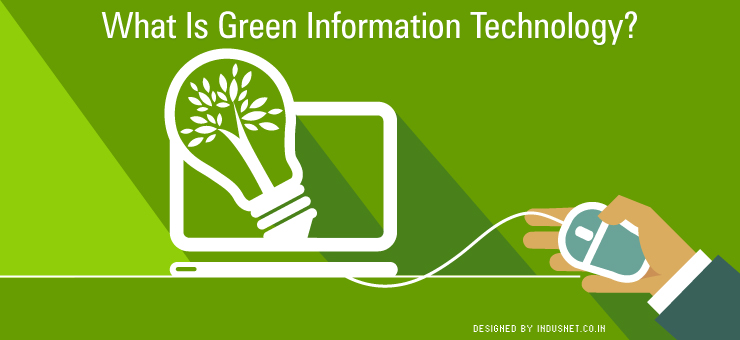
There is no doubt that today’s environment is significantly different from the environment of 20 years ago. There are a lot more cars, industries and pollution from all kinds of sources. With developing countries consuming more than developed countries, it is becoming an unsustainable scenario where millions of tons of waste is generated on a continuous basis. Amid all this, there is also the problem of information technology.
As IT grew, people and organizations began to buy more computers, devices, servers and other peripherals, leading to more electronic waste. Some of this waste is very hazardous and polluting to the environment. Moreover, computer peripherals tend to use a lot of energy and companies that make profits from the IT sector have a unique responsibility towards their environment.
With this in mind, Green Information Technology is the practice of environmentally sustainable computing. Green IT, as a philosophy, came into being in 1992 when the Energy Star labeling system was unveiled by the U.S. Environmental Protection Agency. It is a labeling system that helps companies to reduce greenhouse emissions and save money as well. It does this by identifying superior and green products that reduce greenhouse emissions & energy consumptions.
With this in mind, we can kind of gather where the philosophy of Green IT comes from. Now, in order to understand green IT in today’s context, let us take a look at some of the problems that are pulling us down as a society.
1. Electronic waste
Today, companies generate a lot of electronic waste. This includes computers, laptops, batteries, chips, smartphones, silicon and a host of other waste products. All this pollute our environment greatly. Green IT involves safe disposal of electronic waste and dealing with companies who will also engage in safe disposal of their electronic waste. Adequate waste disposal methods need to be put in place in all IT departments and this actually needs to be a part of IT governance.
2. Increased energy consumption
The more we consume energy, the scarcer coal, water and other products will be. Nuclear technology has its own risks. The best we can do is to reduce energy consumption. It order to do this, companies can adopt cloud computing, instead of buying their own personal infrastructure.
Shared platforms and infrastructure help companies to reduce their greenhouse emissions & energy consumptions. It becomes our moral responsibility to choose products and services, which work towards reducing energy consumption. Cloud computing will definitely be one of the preferred options because of this.
3. Culture of replacing products, instead of repairing
A number of companies continue to replace their devices and peripherals even when it is not required. These older devices can easily be fixed and used for a few more years. Companies need to actively encourage repairing devices rather than replacing them. This is an important part of green IT. When we repair existing products, waste generated by our companies will be lesser.
4. Using low quality products
Low quality products consume more energy and emit more greenhouse gases. They might also be manufactured with unsafe and toxic materials, which do not degrade biologically. In order to avoid this, we will need to invest in high-quality and energy-efficient products, which are green and environmentally friendly.
They might prove to be expensive in the beginning but you will save a lot of money in the long term. Low quality products do not go through the standard testing protocols and some of them fail emission level tests, hazardous materials test and other such tests miserably. They are also known to drain electricity more than high quality products.
Looking ahead
Green IT is only going to grow bigger. As global warming is becoming more important to tackle, we all will need to focus on green IT. This begins with doing business with companies that are green and sustainable. It becomes our responsibility to push green philosophy for the sake of environment.
It becomes a moral responsibility not only for companies but also for end users and clients. Unless you go green, people might hesitate to conduct business with you. In the near future, we can see a growing awareness about environment-friendly behaviors and people will likely prefer to use products & services from companies that stand up to their green ideals.